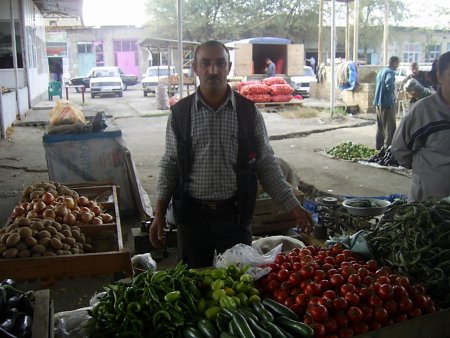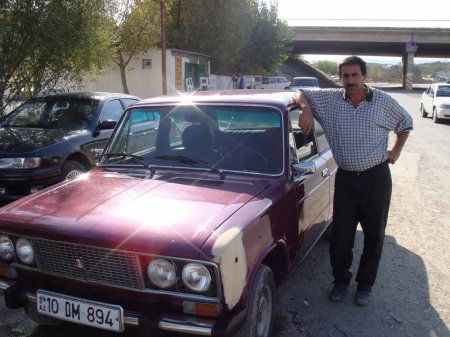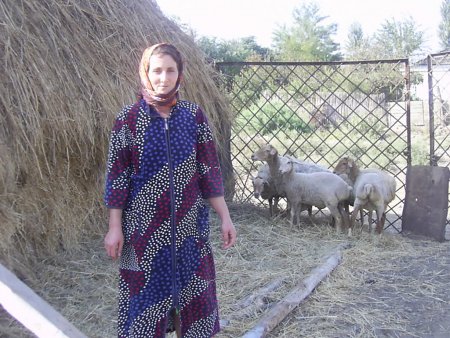
Kiva.org – Loans that change lives
Kiva.org fulfills dreams, using the traditional microcredit paradigm with a non-traditional twist. It offers a case study for social entrepreneurship in the 21st century.



Traditionally, microcredit schemes follow this paradigm: lenders extend small loans (microloans) to the very poor who, under normal circumstances, would be ineligible to borrow money due to unemployment and lack of collateral. With this otherwise unimaginable opportunity, these individuals are transformed into mini-entrepreneurs, provided with the opportunity to start small businesses or purchase required equipment, tools, and resources needed for a sustainable livelihood. A successful project allows the poor to generate wealth and eventually exit out of poverty.
Via the Internet, Kiva.org empowers people across the globe to provide opportunities to people who need it most. This non-profit organization allows anyone who can access the Internet to be a potential microloan lender. While a microfinance field partner works in the local community to identify and manage the loans, individuals seeking loans are posted on the site with descriptions of how the money will be used.
A field partner is essentially a mini-bank, without the usual commercial aspects of the industry. Potential lenders from anywhere in the world are matched with potential borrowers through just a few simple clicks.
Loans That Go Global: Alleviating Poverty through Microfinance
Kiva.org partners with existing microfinance institutions, who are experienced in selecting appropriate entrepreneurs in need. The institutions are then able to upload profiles of borrowers directly to the website. Individual loan needs range from $200 up to about $1,200. Would-be loaners can then browse Kiva’s web site and select which individuals they’d like to help. They can contribute anywhere from $25 to the full amount of the loan with literally the click of a mouse. When the loaner decides which loan they’d like to fund and for how much, they are taken to PayPal to process the transaction. Because PayPal is not charging an administration fee, the transaction is completely free.
Once the transaction is complete, Kiva provides a basic portfolio management tool that allows you to track your loans and the repayment process. The site also builds community by featuring online journals from the loan recipients. In this way, need is matched with assistance, forging a powerful relationship between two strangers across the globe. Through the internet, one-on-one relationships that were previously impossible are created. So far, Kiva.org has provided more than $16 million towards a total of over 25,018 loans.
Instigator or promoter, and funding structure
Kiva.org is run by a team of individuals, consisting of a small staff, board of directors and volunteers. Matt Flannery is the founder of Kiva.org. He developed the project with his wife Jessica in late 2004, as a side-project while working at TiVo as a computer programmer. Flannery eventually left his job to work on Kiva.org full-time as its CEO. He is supported by a staff of young high-achievers and development practitioners who have prior experience working at Internet giants like PayPal and Google, as well as development agencies such as USAID, DFID, and the United Nations.
The organization is financially supported by private donors, institutional sponsors and corporate partnerships. Kiva was selected for the prestigious Draper Richards fellowship, as well as for large grants from the Kellogg Foundation, the Doen Foundation and The Rockefeller Foundation. According to Premal Shah, Kiva.org’s president, the organization’s 501(c)3 non-profit status works greatly in their favor to attract corporate partners like PayPal, who provide Kiva.org with free payment processing. The processing is Kiva’s largest variable cost, so without it, PayPal enables 100% of the loaned funds to reach entrepreneurs in developing countries. Kiva is also a Google Grants recipient, which allow the website to attract new lenders by promoting it through free Google Adwords. Kiva pop ups any time an Internet user searches for information on poverty alleviation, and links users to the website. Kiva can achieve high volume with low overhead, like other websites that use the Internet for their medium of business, such as Wikipedia, which has four people on its payroll, and Craiglist that now has eighteen. This is a natural advantage comared to many other inefficient, funding-starved non-profit organizations.
Kiva.org has been recognized by the Clinton Global Initiative and mentioned in President Clinton's book, Giving. The organization has been featured in The Wall Street Journal, on ABC News, CNN, the New York Times, and Oprah Winfrey's television show.
Monitoring and Evaluation
As mentioned above, Kiva.org boasts a remarkable 99.7% repayment rate on loans. Nonetheless, Matt Flannery cautions that compared to traditional investments, lending on Kiva.org is risky. Lenders are taking on three levels of risk. First is entrepreneurial risk, in which the entrepreneur faces crop failure, illness, or other events in which he or she is no longer able to pay the lender back. Second is field partner risk, in which the MFI (microfinance institution) may embezzle or improperly disperse the funds and third is country risk, in which a country’s government can choose to interrupt lending transactions or currency can unexpectedly fail. Other person-to-person lending startups, such as Prosper or Zopa, rely upon electronic transfer of funds through the Internet, allowing a lender to send money directly to a borrower. Using FICO scores of borrowers, lenders can select credit-worthy borrowers and can rely on a powerful group of collection agencies which attempt to recover money if it is not repaid.
Given these substantial risks and the absence of robust safeguards, how does Kiva.org maintain not only its impeccable repayment rate but also the consistent faith of its lenders? None of the risk-mitigating strategies other sites use were available in the rural, underdeveloped places that Kiva.org was most keen to work in. Instead, Kiva.org’s strategy relies heavily on MFIs. These groups distribute cash locally after it is received in a wire transfer and usually can ensure repayment because they are so deeply ingrained in local communities. If an individual were to default on a loan, their reputation in the local village or town, acting as collateral, would be compromised. Also, MFIs work as collection agencies if necessary, once again leveraging their informal credit system. Usually, the MFI organizations that are the most transparent and credit-worthy are least in need of the funding. Kiva hopes to address this paradox by using the Internet as a reputation-building mechanism. Just as sellers build a performance rating on site like Ebay, MFI organizations improve their track record with each successful transaction and repayment.
What differentiates Kiva.org most from Prosper or Zopa, is that it does not charge interest on its loans and lenders do not stand to make any money. Unlike charity, there is a very good chance investors will get their money back. Participating in Kiva.org's microloan program lets lenders help people in the developing world with the expectation of getting their money back. This is an appealing alternative to traditional donations for many people. Also, rather than receiving interest in the form of monetary value, as in a bank account, lenders receive meaningful and rewarding social value instead. More than 90% of the funds that go into the system are reinvested, creating a floating pool of money that is consistently creating opportunity in the developing world.
Notable Statistics
Total value of all loans made through Kiva.org: $14,177,635
Number of Kiva Lenders: 139842
Number of loans that have been funded through Kiva.org: 21,771
Number of Kiva Field Partners: 64
Number of countries Kiva Field Partners are located in: 37
Current repayment rate (all partners): 99.74%
Current default rate (all partners): 0.26%
Average size of loan for funding: $631.41
Average total amount loaned per Kiva Lender: $101.42
DN
References:
Read a blog by Kiva's founder, Matt Flannery -
http://www.socialedge.org/blogs/kiva-chronicles
http://www.kiva.org/app.php
http://www.kivafriends.org/
http://www.readwriteweb.com/archives/kiva_11_million_in_loans_to_developing_nations.php
http://www.nextbillion.net/activitycapsule/1547
http://uk.intruders.tv/Premal-Shah-of-Kiva-org-on-microfinance-and-helping-poor-help-themselves_a226.html
http://en.wikipedia.org/wiki/Kiva.org





